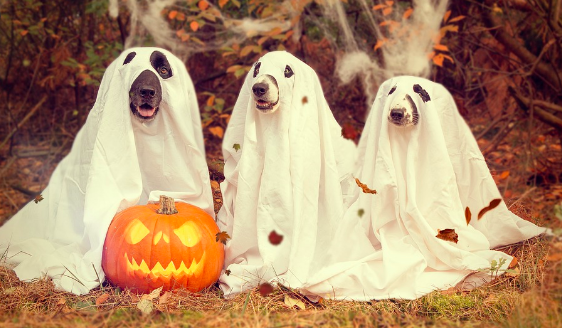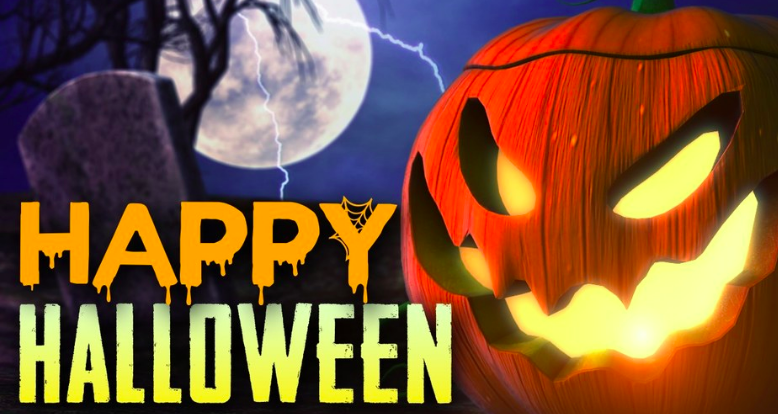Halloween How it all Started
Halloween has arrived, and like every year both the Maremma and other parts of Italy and the world are preparing to celebrate the most fearful night of the year. On the origins of the holiday, the debate is still open, but most scholars converge on the hypothesis that Halloween is the son of the Celtic Samhain festival.
Entertainment
The transition from summer to winter and from old to new year was celebrated with long celebrations. In that period of the year, in fact, the fruits of the earth were insured, the livestock was in a good state of health and the stocks for the winter had been prepared. The community, therefore, could rest and thank the gods.
This happened with the feast of Samhain, with which the arrival of the cold season and its dangers was exorcised, trying to grab the benevolence of the deities with propitiatory rites.
see also: Weight Loss: How 3 things helped this girl lose 30 kilos without going to gym
The Celtic tradition wanted that the eve of each new year, the Samhain, called to itself all the spirits of the dead so that, in the night between October 31 and November 1, the forces of the spirits could join the world of the living. Therefore, the Celts organized gatherings in the woods and on the hills, lit fires, the so-called “sacred fire”, and immolated animals to the gods.
Dressed in grotesque masks, the Celts then returned to the village, lighting themselves with lanterns made of carved onions, inside which were placed the embers of the “sacred fire”. After the ritual of the Samhain, the Celts continued to celebrate for three days disguising themselves with the skins of the animals killed to frighten the spirits.

Subsequently, in Ireland it spread the custom of lighting torches and torches outside the doors and leaving food and milk for the souls of the dead who would visit their families. In this way, it was thought, they would have diverted them from the desire to hurt the living.
Around the middle of the 19th century, a terrible famine struck Ireland, so many people decided to leave the island and move to the United States. Here they created an important community where their traditions and customs were kept alive. Among these, Halloween. Soon, therefore, the custom spread among the American people.
Losing its ritualistic meanings, Halloween has become one of the most important festivals in the United States and an opportunity to have fun that, slowly, has been around the world.
The custom of combining objects and symbols on Halloween has changed over time. For example, the custom of carving the pumpkin, emptying it inside and creating eyes and mouth to give it a frightening expression, is a more modern reinterpretation of the ancient Irish tradition of engraving turnips to make lanterns with which to remember the souls trapped in Purgatory.
Immigrants in North America used the native pumpkin, which was available in large quantities and was larger, thus facilitating the work of carving.
see also : Donald Trump was taunted with chants of boos and Lock him up
The first episode of pumpkin carving of which there is evidence dates back to 1837, but initially it was associated with the time of harvest in general. It was specifically associated with Halloween only in the second half of the twentieth century.
The symbolism of Halloween has different origins and derives from different sources such as national costumes, gothic and horror literary works, novels like Frankenstein, Dracula and The Strange Case of Dr. Jekyll and Mr. Hyde, and classic horror films, such as Frankenstein , The mummy, The exorcist and Shining.
Among the earliest works concerning Halloween are those of the Scottish poet John Mayne, who in 1780 noted both the Halloween jokes in What fearfu ‘pranks ensue !, and how much of the supernatural he was associated with that night in Bogies (Ghosts). These works influenced the writer Robert Burns’ Halloween poem (1786).
Halloween – Controversy
Pagan festival whose name derives from the ancient Irish (translated: ‘end of summer’), it was celebrated on 31 October, which for the Celts coincided with the end of the year as well as with the end of the hot season and the beginning of the cold one.
Finally, the custom of children to go masked from house to house asking for sweets and candies with the question “Trick or treat?” Dates back to the late Middle Ages, when the poor went from door to door begging for food and prayers for their dead in All Saints Day (November 1). Even William Shakespeare mentioned this practice in his comedy The Two Gentlemen of Verona (1593), when a character is accused of “complaining like a beggar in Hallowmas (Halloween)
How to make Your Website Show Up On Google in 2019
Fact Check
We strive for accuracy and fairness. If you see something that doesn’t look right, contact us!

